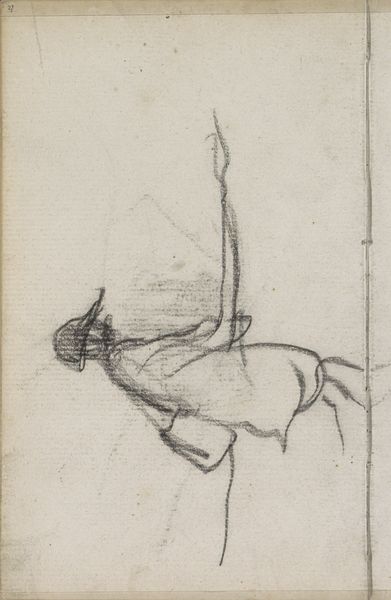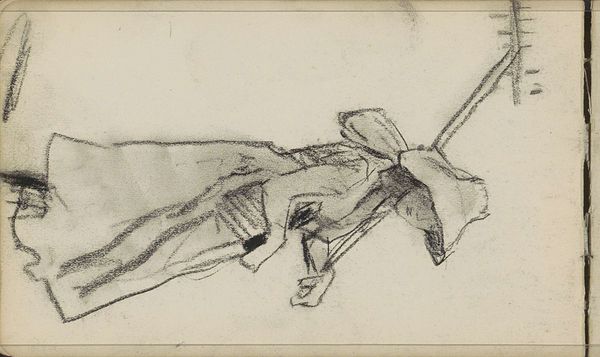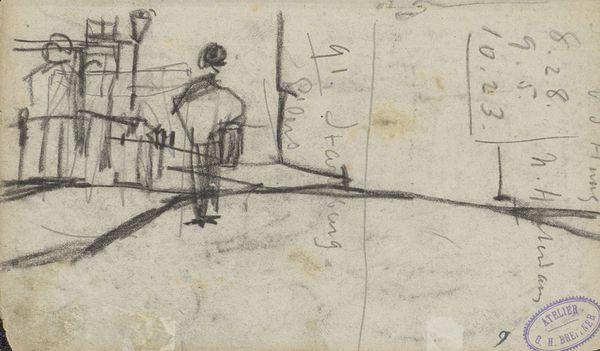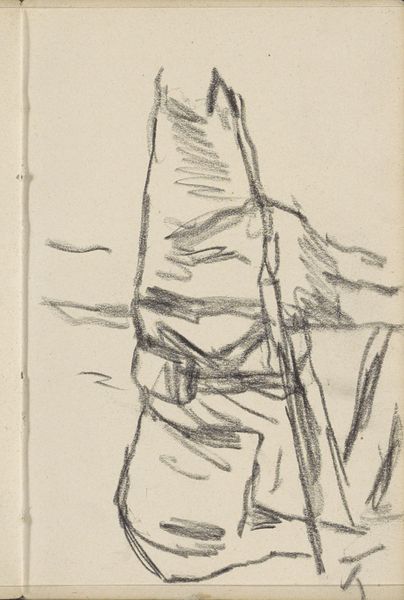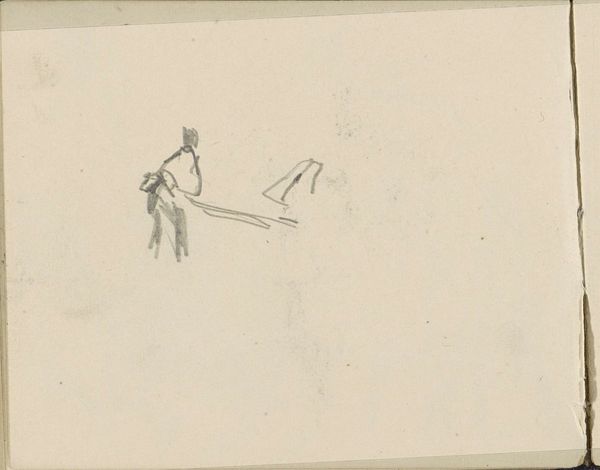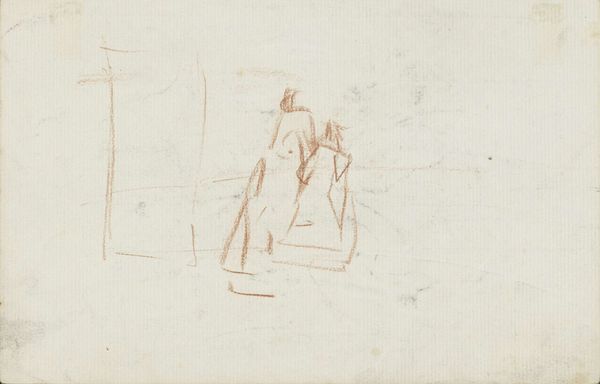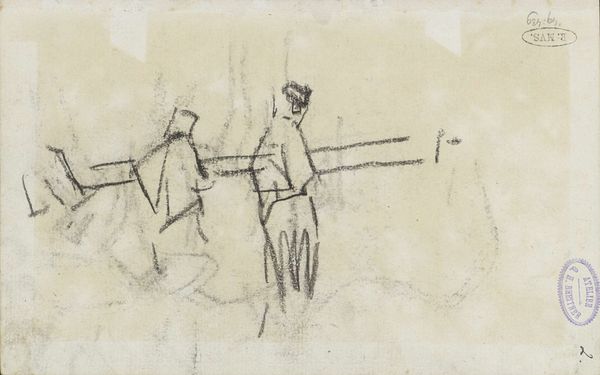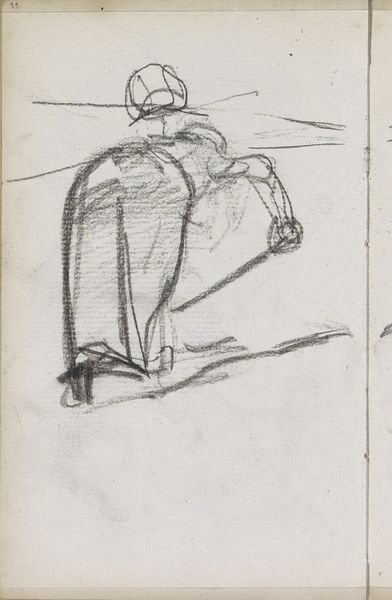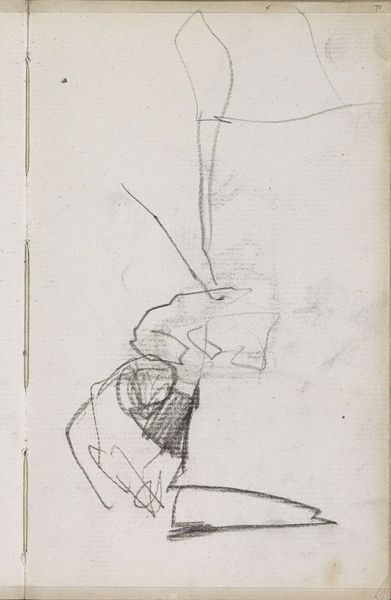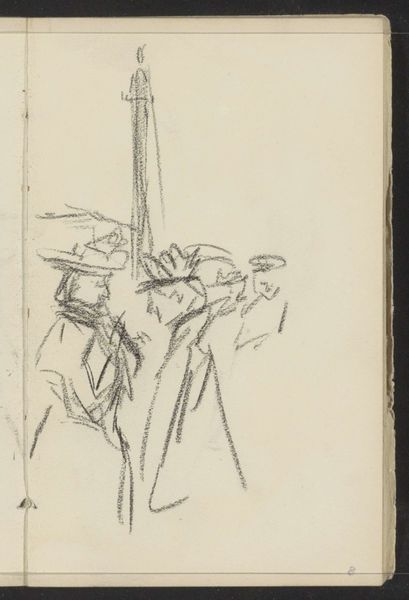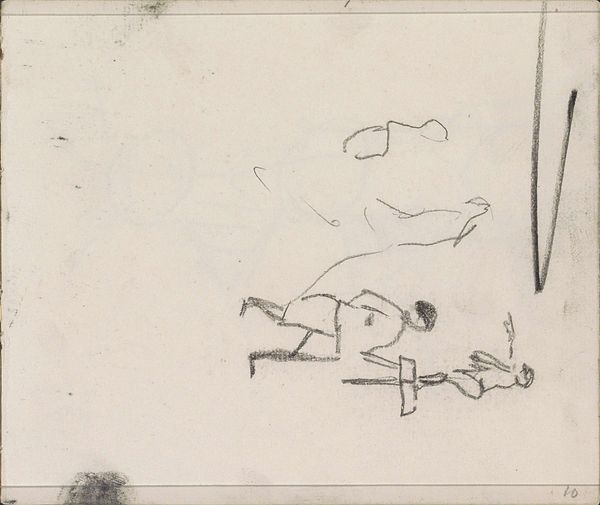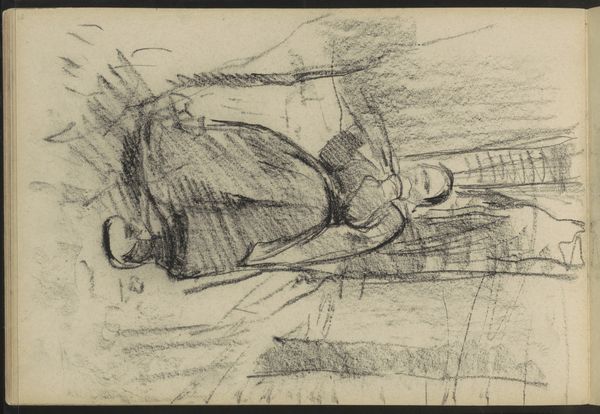
drawing, paper, pencil
#
portrait
#
drawing
#
amateur sketch
#
light pencil work
#
quirky sketch
#
landscape
#
figuration
#
paper
#
form
#
personal sketchbook
#
idea generation sketch
#
sketchwork
#
romanticism
#
pen-ink sketch
#
pencil
#
line
#
sketchbook drawing
#
sketchbook art
#
initial sketch
Dimensions: height 60 mm, width 69 mm
Copyright: Rijks Museum: Open Domain
Simon Andreas Krausz made this sketch of a walking man with graphite on paper, sometime between 1760 and 1825. The figure, presumably a peasant, strides across the landscape with a tool slung over his shoulder, maybe a scythe or fishing rod. What does it mean to represent the common man this way? Krausz was working at a time when the Dutch Republic was in decline, its Golden Age of prosperity long gone, and class tensions were simmering. The image romanticizes rural life, presenting it as simple and honest. But there is also a sense of burden; the man is stooped, his labor seems endless. To understand this sketch better, you might look at how similar subjects were depicted in Dutch genre painting of the period and also research the socio-economic conditions of the rural population in the Netherlands at that time. Remember, art always exists in relation to its historical context.
Comments
No comments
Be the first to comment and join the conversation on the ultimate creative platform.


